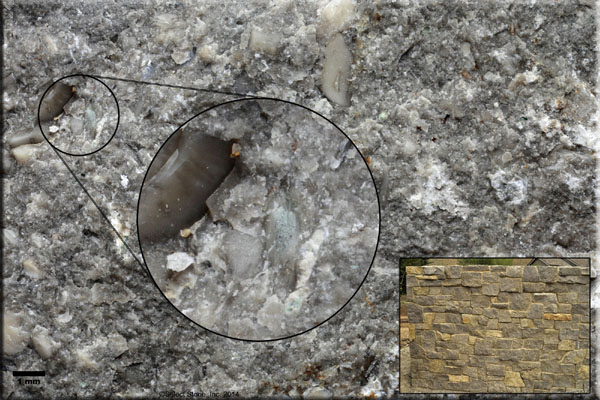A close-up view of some of our favorite limestones
Limestones are interesting when viewed through a simple 10-power hand lens because they commonly contain fossil fragments. The photos shown below were shot with good lighting and a macro camera lens; however, a similar view, if not quite as clear, is possible with a hand lens.
Garden City BuffTM and CortonaTM Limestones

Both Garden City Buff Limestone and Cortona Limestone are quarried from the same geologic formation. Consequently, they have a similar range of colors and mix of marine fossils. The colors and textures of these limestones make them work with many architectural styles
Glen Rose LimestoneTM
Glen Rose is an attractive limestone that ranges in color from gray to buff with some red staining. Up close, you can see fossil fragments, vessicles, calcite cement, and flecks of hematite (red) stain.
Pilgrim LimestoneTM

Pilgrim Limestone has a beautiful light buff and gold color range that reminds us of the Mediterranean limestones. Up close, it is composed of small limestone pellets and sparse fossils cemented together with calcite.
Garden City GrayTM Light and Dark Color Range
Garden City Gray Limestone comes in a lighter color range, shown above, and a darker color range, shown below. Up close the two limestones look pretty similar. The darker color comes from a greater amount of organic matter in the limestone.
Cottonwood Limestone has the lightest color of the stones shown here. Light-colored limestones generally were deposited in higher energy environments (like shallow reefs) where any organic matter, which would stain the stone darker, has been broken down and removed. Up close you can see a veritable hash of fossil fragments.





